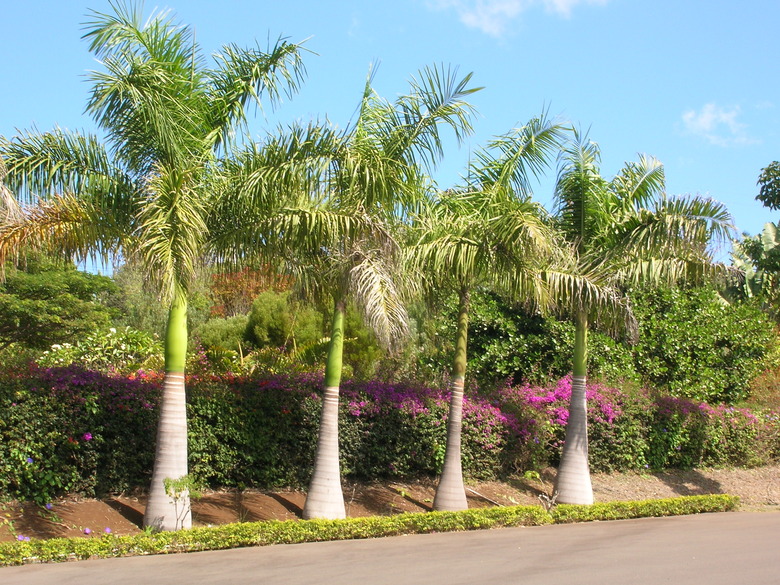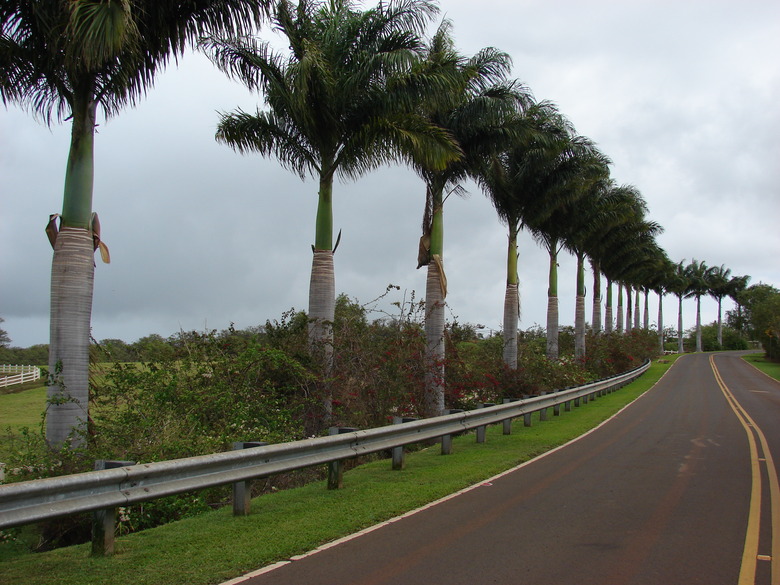How To Grow Royal Palm Trees From Seed
Propagating a royal palm tree can be a challenge. These trees grow only from seed, but their seeds can sulk rather than germinate. To aid germination, pay attention to what the experts say, and don't assume that all palm trees share the same traits regarding germination—because they don't. The royal palm has some quirks of its own.
The royal palm (Roystonea regia, USDA hardiness zones 10 to 11) is native to South Florida, Cuba and Mexico and has naturalized in the U.S. in Hawaii.
If you have access to a royal palm, you can collect the seeds yourself; otherwise, purchase them from a commercial grower.
A Snapshot of the Royal Palm
Are you sure you want to propagate this tree? Just checking, because this species of palm is huge. It typically reaches 50 to 70 feet but can grow 125 tall with a spread of more than 25 feet. Popular in city parks or city streets, it's a rare backyard that can accommodate the royal palm.
One thing to be aware of with this huge tree: its leaves drop when they are spent, and they are heavy (about 50 lbs. when fresh), so they can damage a structure, nearby vegetation or a person. A royal palm drops about one leaf per month, and if that leaf is growing 100 feet up, the velocity and the weight make it come down with a big thud.
The royal palm is cold hardy only down to about 28°F, which might sound cold, but it equates to zone 10a, its coldest zone. In colder climates, you cannot grow this tree; it doesn't lend itself to container planting as a houseplant due to its size.
Germinating Palm Tree Seeds
Almost all palm trees are grown only from seed, and this is true of the royal palm, but palms are infamous for uneven, extremely slow germination rates. The University of Florida reports that **a quarter of all palm species need more than 100 days to germinate, and only about 20 percent of palm tree seeds ever sprout.**
However, expert growers have developed some strategies to improve or speed up germination.
Tip
Royal palms take longer than many other palms to germinate, because their seeds contain immature embryos when the palm fruit falls. The germination time is generally from five to eight months.
When to Harvest Seed
Whether to harvest seed from a ripe or unripe fruit is a bait-and-switch situation for royal palms: Half-ripe or green fruits produce seed that germinates more quickly than seed harvested from ripe fruits, but a smaller percentage of these end up germinating.
Perhaps it's better to harvest the seeds from ripe fruits, even if you have to wait a long time for germination, than to risk a too-small percentage of seeds actually sprouting.
Warning
Royal palms have an irritant in their fruit pulp (calcium oxalate crystals), so wear rubber gloves when cleaning the fresh seeds.
Presoak and Scarify
Clean off the seed pulp and then presoak seeds for one to seven days. This recommendation is for most palms. Some researchers didn't observe a benefit for royal palm trees, but many experts still recommend it. It can't hurt. Change the water daily.
Some growers recommend scarifying the seed coat before germinating, as well, although this recommendation is not universal. It refers to scratching off the hard surface of the seed.
Potting Medium and Location
Use pots rather than flats to provide more room for palm root growth and ensure good drainage. Use a high-quality, well-draining potting soil or a 1:1 mixture of perlite to peat moss.
Make sure to maintain even moisture, because changes from wet to dry can inhibit palm seed germination.
Keep the seeds in a warm or hot location from 70 up to 100°F and in full sun during the germination period. This can enhance root growth and seed development. Take care, however, never to let the seeds dry out.
Storing Royal Palm Seeds
While it's best to plant palm seeds as soon as possible after cleaning them, if you have to store them, ensure they are completely dry, dust them with thiram or captan and seal the seeds in a plastic bag. Place them in a location that maintains 65 to 75°F for a maximum of nine months.
Growing Palm Trees From Seed
Transplant seedlings after one or two leaves have developed. Avoid disturbing the roots and try to plant before they begin to circle the pot.
Ideally, prepare to transplant palm seedlings multiple times into increasingly larger pots before placing them into the landscape. You want to ensure a strong root system while they are young and you can control their growing environment.
The point is to provide enough room in the pot to support the growing root system while avoiding the overwatering and potential root rot that might occur if you move them directly from the germination pot to a much larger pot.
Never trim the root while transplanting, because this can not only slow growth but could also kill the seedling. Find a pot that can fully accommodate the root.
Warning
Avoid planting the seedling too deeply. The area on the stem where the root system appears to develop should be even with the soil surface.
Transplanting Into the Landscape
After each transplanting, place the pots in light shade for a few weeks until you see new growth. When the palms are 2 feet or more in height and their root system is robust, you can plant them in the landscape.
In well-draining soil in full sun or partial shade, dig a hole about twice the size of the container. Plant the palm so the top of the rootball is about 1 inch below the soil surface. Try to avoid damaging or pruning the roots.
Fertilize with a high-nitrogen, slow-release fertilizer.

